2016 Honda Pilot: First Look

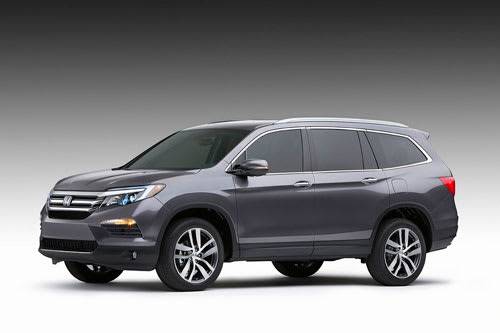
Competes with: Hyundai Santa Fe, Dodge Durango, Toyota Highlander, Ford Explorer
Looks like: A pumped-up Honda CR-V
Drivetrain: 3.5-liter V-6 engine, six-speed or nine-speed automatic transmission, optional all-wheel drive
Hits dealerships: Summer 2015
Honda’s big SUV got a huge styling change when it went from the sleek, angular first-generation model to the boxy, not-so-attractive second-generation model. For 2016, it’s coming full circle — the redesigned Pilot got a very stylish update for the 2016 model year.
The new Pilot is longer than the one it replaces, which increases interior room — something the previous model didn’t exactly lack, being one of the few three-row SUVs on the market that could accommodate three child seats across the second row. The field has changed a lot since the Pilot was last redone in 2008, with competitors all having received at least one update in the time the Pilot has soldiered on unchanged, but now the new Pilot has arrived to up Honda’s game in this hot-selling segment.
Exterior
Gone is the boxy styling and in its place is a big SUV that looks almost exactly like a CR-V pumped up on steroids. Optional LED headlamps and LED daytime running lights match up to standard LED taillights. The truck may look smaller than the outgoing model, but it’s not — the 2016 Pilot is 3.5 inches longer than the old one, with 1.7 inches of length coming in the wheelbase for a bigger interior. Twenty-inch wheels will be optional, as will a panoramic moonroof.
Interior
The interior resembles the Odyssey minivan in style and shape, with seating available for seven or eight passengers, depending on your choice of captain’s chairs or a second-row bench. The increased interior room means that an 82-quart cooler can fit behind the third row of seats with those seats still up, something Honda says is a class-exclusive feature. The cabin is loaded with family-friendly features as well, including a new one-button folding mechanism for the second row to allow for easier access to the third row. Other features include the traditional drop-down rear-seat entertainment screen (now featuring a Blu-ray player) and a new center console that can accommodate several tablets or a large purse. The console also features a roll-top cover that is structurally sound enough to also accommodate a heavy purse on top between the front seats.
The electronics get an upgrade as well, with a new 8-inch touch-screen with a brand-new navigation system that finally looks modern and competitive. It comes with the Display Audio capacitive touch-screen that we’ve had mixed feelings about in other Honda products, unfortunately. A new gauge cluster incorporates an LCD display screen as well, and charging options for passengers’ electronics are numerous: the new Pilot can be equipped with five USB ports, four of which are 2.5-amp plugs able to charge iPads. There’s also an auxiliary jack for audio player connection, an HDMI port for a gaming console, two headphone jacks, two 12-volt power outlets and a 115-volt plug.
Under the Hood
Powering the stylish new SUV is an all-new 3.5-liter direct-injected V-6, but Honda is mum on horsepower and torque numbers as of this writing. Power is routed through a new six-speed automatic transmission to the front wheels; all-wheel drive is optional. On higher trim levels, a new nine-speed automatic will be standard. Honda will also offer a stop-start system that shuts the engine off at idle as an option to improve fuel economy. No word yet on what that fuel economy will be, but Honda says that the new Pilot is some 300 pounds lighter than the outgoing model, a surprising number given its bigger dimensions and additional equipment. Combined with the new engine and transmissions with more gears, it should make for improved mpg numbers.
Safety
Honda has upgraded the safety systems on the Pilot big-time, with the new model featuring just about every electronic whiz-bang safety gizmo available. A back-up camera is standard on the Pilot, but now features optional cross-traffic alert as well. Also standard are blind spot indicators and Honda’s LaneWatch technology, which uses a tiny camera in the passenger-side rearview mirror to show what’s in the vehicle’s blind spot on the screen in the dashboard whenever the right turn signal is activated.
The list of optional safety equipment has also grown: automatic cruise control, forward collision warning, lane keep assist, lane departure warning and Honda’s first “road departure mitigation” system. The company says that it is aiming to keep its five-star crash government safety rating for the Pilot, as well as get the Top Safety Pick Plus award from the Insurance Institute for Highway Safety.
Look for the new Pilot in U.S. showrooms sometime this summer.
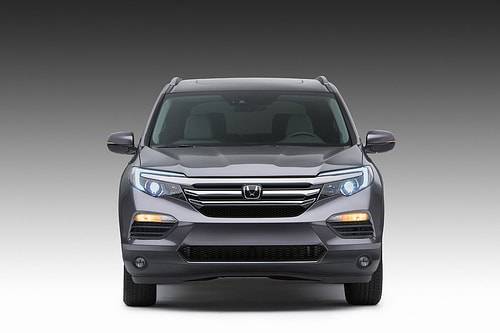
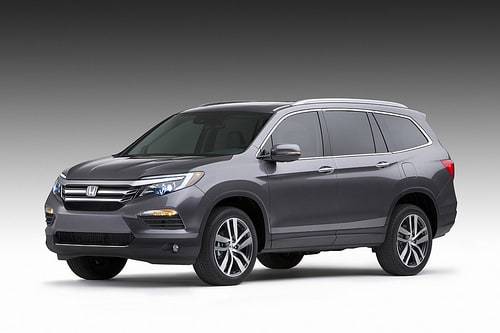
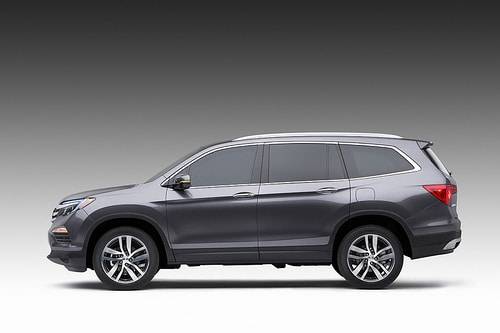
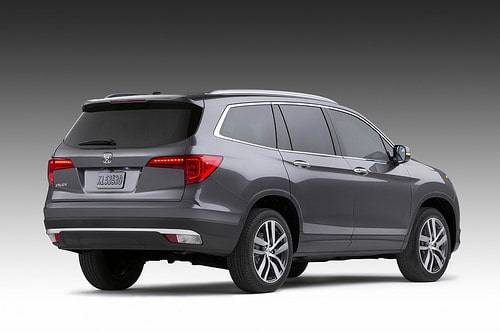
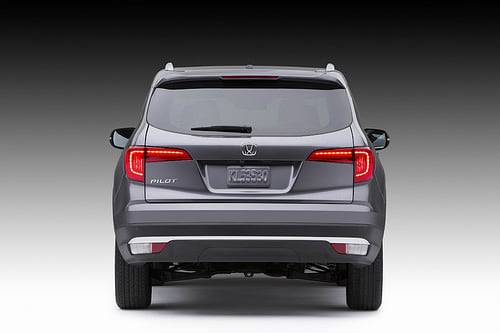
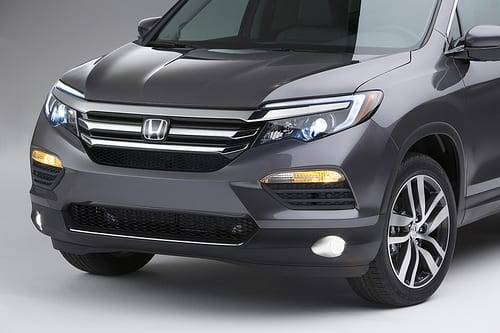
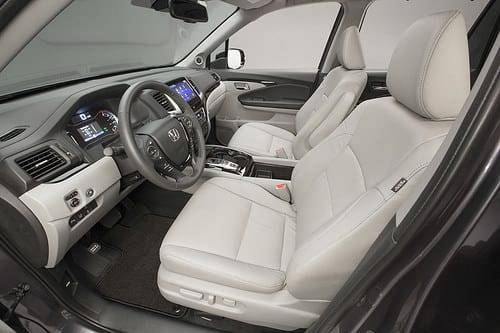
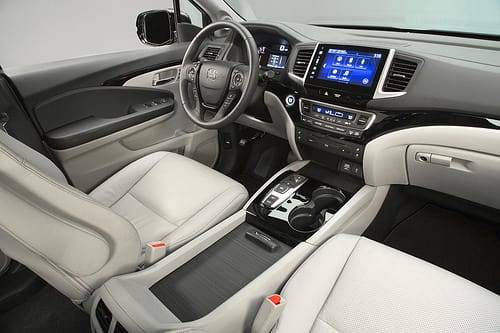
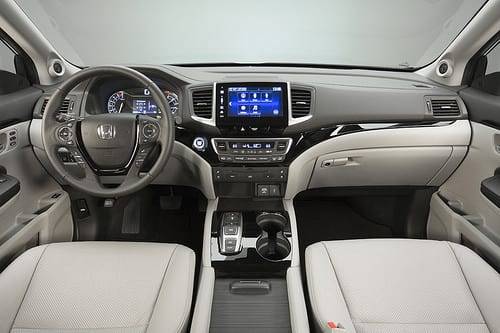
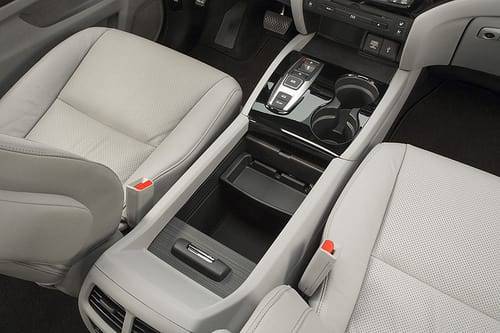

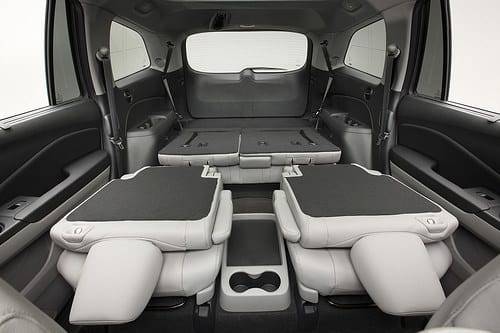
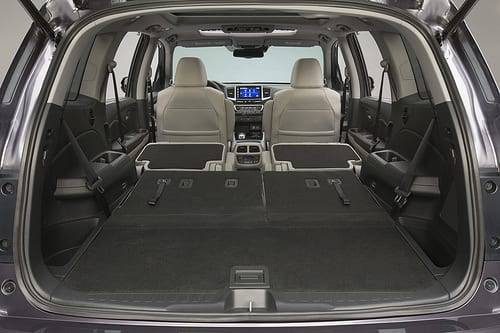
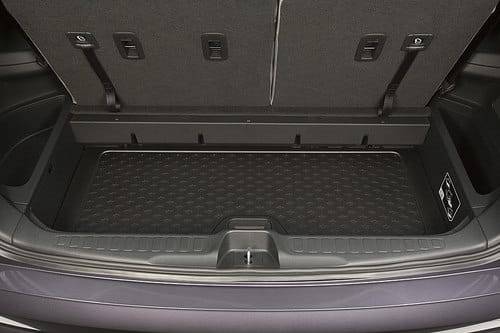
Manufacturer images

Detroit Bureau Chief Aaron Bragman has had over 25 years of experience in the auto industry as a journalist, analyst, purchasing agent and program manager. Bragman grew up around his father’s classic Triumph sports cars (which were all sold and gone when he turned 16, much to his frustration) and comes from a Detroit family where cars put food on tables as much as smiles on faces. Today, he’s a member of the Automotive Press Association and the Midwest Automotive Media Association. His pronouns are he/him, but his adjectives are fat/sassy.
Featured stories



